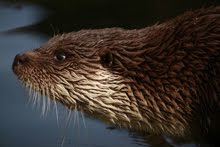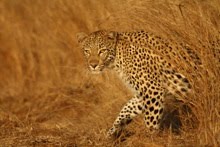Big white birds are often hard to photograph as the large white surfaces reflect a large amount of light, meaning that it is difficult to accurately set the exposure on the plumage without getting a very dark overall image. Or, in the opposite case, if you set the exposure for the entire image then the whites of the bird tend to "blow out".

Essentially, blown-out whites means that that portion of the image is so bright that the camera does not record any important fine-detail information - just plain white. Because no information is recorded, no amount of photoshopping will be able to rescue that detail. Although an old-fashioned paint brush might do the trick.


How do I avoid blowing out the whites in my photos? Well, there are some things that can be done:
- the best solution for white birds is to photograph them at sunrise or sunset when the light is softer and you will have less problem matching the feather exposure with the image exposure. A solar eclipse would also be do, but they tend to be shorter and less frequent than the classic dawn/dusk approach.
- underexpose the image a little. I personally prefer darker images, not bright computer screens... so this is a bit of a personal thing, but regardless, it can help with better exposing and getting feather detail in white birds.
- some mid- to high-end digital SLR cameras are able to take multiple images of the same subject at various exposures and then re-combine the images again to create a new image incorporating information from an enormously high dynamic range.
- use a camera with a high dynamic range. The dynamic range in digital photography describes how effectively a camera is able to measure and record detail for really dark and really light areas in an image (Dynamic range in photography describes the ratio between the maximum and minimum measurable light intensities (white and black, respectively). To oversimplify and generalise, the larger the sensor size, the higher the dynamic range of the camera.
- A Full Format sensor DSLR camera, such as the Canon EOS 5D mark II I am using at the moment, has a large dynamic range, meaning that it is easier to get detail in very bright white areas without losing all the information.
- Compact cameras typically have a rather small dynamic range. This is exacerbated with extra-low ISOs - below 100 - in some compact cameras, where the dynamic range is clipped in order to allow the camera to take finer quality images.
These photos were all taken with the Canon EOS 5D mark II, a Canon DO EF 400mm f4 objective lens.
Achensee starting to freeze over - a beautiful evening
Happy birding,
Dale Forbes








.jpg)



.jpg)








.jpg)



9 comments:
All gorgeous images Dale. Thanks for the tips.
Great tips. I wish I could remember them when I see a swan the next time. Your swan photos are wonderful.
Hi Dale,
Happy new year man! Well you are starting by giving nice advices! Thanks for that... I thing I know how hard it is to get nice shots of white birds... Especially in daylight... Even here some are black and white and the contrast is sometime hard to get correctly...
I will have that one my mind next time I am out with my camera.
Happy new year, MB
Super shots of the Mute Swans Dale. The detail is excellent. I will remember your advise when next I come across a Great Egret or Snowy Egret. Or if I'm lucky, a Snowy Owl!
I am checking my almanac now to see when the next solar eclipse will happen so I can be ready!
Great birds and photos. Thank you for your tips.
Thanks for telling (as well as showing) us the tips for better photos. I've struggled with that problem and will practice your tips to see if I can make those steps automatic.
Lovely swans, by the way.
...beautiful, beautiful images! ...and thank you for posting the photography tips. I will use them!
Thanks for the tips, Dale! In my case I use spot metering when photographing an all-white bird (like the swan).
Great photos, by the way. :-)
Post a Comment